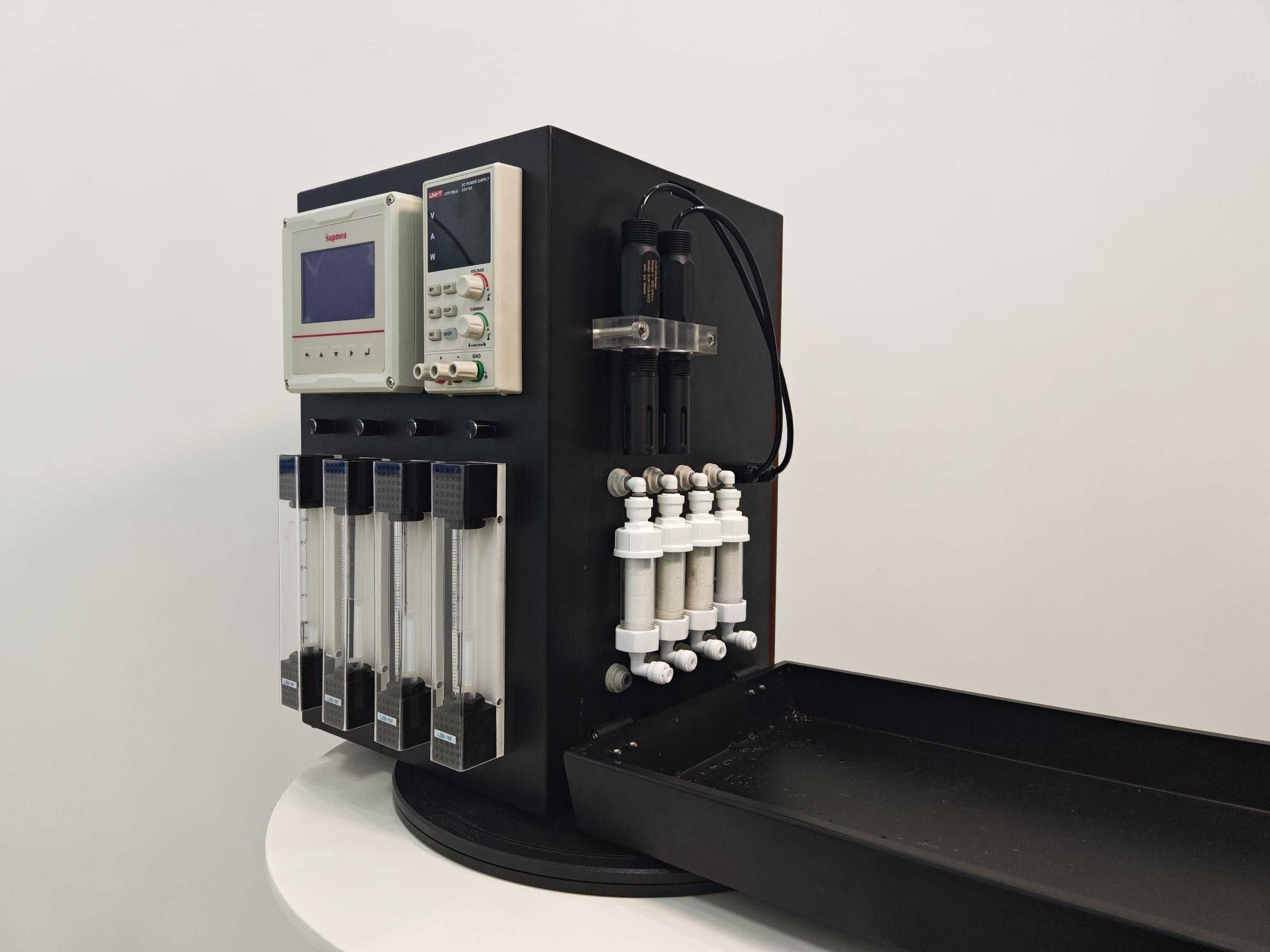27
2025
-
05
Exploration of Electrodialysis Applications in Separation of Pharmaceutical Intermediates and Salts
Author:
Pharmaceutical intermediates are chemical raw materials or products used in drug synthesis processes, and their purity is crucial to the quality and efficacy of final pharmaceuticals. During the production of pharmaceutical intermediates, large amounts of salt impurities are often introduced. These not only affect the intermediates' purity but may also interfere with subsequent drug synthesis reactions. Therefore, developing efficient and environmentally friendly separation technologies for pharmaceutical intermediates and salts is of significant practical importance. As a novel membrane separation technology, electrodialysis (ED) has demonstrated broad application prospects in this field due to its unique advantages.
 1. Principles and Characteristics of Electrodialysis Technology
1. Principles and Characteristics of Electrodialysis Technology
(1) Principles
(2) Characteristics
- High-efficiency separation: Selectively removes salt ions with minimal loss of pharmaceutical intermediates, yielding high-purity products.
- Mild operating conditions: Typically operated at room temperature and pressure, avoiding damage to heat-sensitive components of pharmaceutical intermediates and preserving their biological activity.
- Environmental friendliness and energy efficiency: Compared with traditional separation methods like evaporation crystallization, ED consumes less thermal energy, generates no harmful gases or waste residues, and is environmentally benign.
- Easy automation: With a relatively simple structure, ED equipment is suitable for automated control, enhancing production efficiency and product quality consistency.
2. Application Scenarios of Electrodialysis in Separation of Pharmaceutical Intermediates and Salts
(1) Post-processing of Fermentation Broths
In the fermentation production of pharmaceutical intermediates, fermentation broths often contain high levels of salts (e.g., NaCl, (NH₄)₂SO₄) and target intermediates. ED can remove these salt ions, improving the intermediates' purity and providing better feedstock for subsequent extraction and purification processes. For example, in antibiotic production, ED-treated fermentation broths show significantly reduced salt content, facilitating subsequent extraction and crystallization to enhance antibiotic yield and quality.
(2) Purification of Chemically Synthesized Intermediates
In chemical synthesis of pharmaceutical intermediates, inorganic salts are often introduced as catalysts or reaction media. After the reaction, these salt impurities must be separated from the target intermediates. ED effectively removes such salts to obtain high-purity intermediates. For instance, in the synthesis of certain amino acid-based intermediates, ED can remove reaction-generated sodium sulfate, improving amino acid purity.
(3) Treatment of Crystallization Mother Liquors
Crystallization processes for pharmaceutical intermediates generate large amounts of mother liquors containing residual target intermediates and high salt concentrations. Traditional disposal methods (direct discharge or simple evaporation concentration) lead to resource waste and environmental pollution. ED can treat these mother liquors to recover target intermediates while concentrating and recycling salts. For example, in processing vitamin intermediate mother liquors, ED recovers most of the vitamin intermediates, enhancing raw material utilization.
3. Advantages of Electrodialysis in Separation of Pharmaceutical Intermediates and Salts
(1) Improved Product Quality
ED’s mild operating conditions minimize damage to heat-sensitive components and biological activity of pharmaceutical intermediates, thereby enhancing the quality and efficacy of final products. For example, in separating alkaloid-based intermediates, ED avoids structural damage to alkaloids caused by high temperatures, preserving their biological activity.
(2) Reduced Production Costs
ED’s low energy consumption, recyclability of valuable components, and reduced raw material waste and emissions lower production costs. Its simple operation and suitability for automation also reduce labor costs.
(3) Compliance with Environmental Requirements
ED generates no harmful gases or waste residues, aligning with the green development goals of the modern pharmaceutical industry. With increasingly strict environmental regulations, ED’s application in this field will gain greater advantages.
4. Challenges Facing Electrodialysis in Separation of Pharmaceutical Intermediates and Salts
(1) Membrane Fouling
Pharmaceutical intermediate solutions may contain substances like proteins, polysaccharides, and organic acids, which easily deposit on ion-exchange membranes, causing fouling and reducing separation performance and membrane lifespan. Membrane fouling increases operational costs and compromises separation efficiency.
(2) High Equipment Investment
The relatively high investment cost of ED equipment—driven by expensive components such as ion-exchange membranes, electrodes, and spacers—limits its adoption in small and medium-sized pharmaceutical enterprises.
(3) Technical Complexity
ED operation and optimization require specialized knowledge and skills, demanding high expertise from operators. Moreover, the diverse properties of pharmaceutical intermediates necessitate case-specific process parameter optimization, increasing technical application difficulties.
5. Future Developments of Electrodialysis in Separation of Pharmaceutical Intermediates and Salts
(1) Development of New Ion-Exchange Membranes
Designing ion-exchange membranes with higher selective permeability, anti-fouling properties, and longer lifespan is critical to enhancing ED performance. For example, novel nanocomposite ion-exchange membranes using nanomaterials’ unique properties can improve separation efficiency and anti-fouling capabilities.
(2) Integration with Other Technologies
Combining ED with other separation technologies (e.g., membrane distillation, ultrafiltration) or chemical methods to form integrated processes can enhance separation efficiency and quality. For instance, an ED-membrane distillation hybrid system first removes most salts via ED, then further concentrates and purifies intermediates through membrane distillation.
(3) Intelligent Control
Leveraging advanced sensors, automation technologies, and artificial intelligence algorithms to achieve real-time monitoring and intelligent control of ED processes can enhance production automation and stability. For example, online monitoring of parameters like conductivity and pH enables automatic adjustment of ED operating conditions to optimize separation efficiency.
Electrodialysis technology offers significant advantages and broad prospects in separating pharmaceutical intermediates and salts. With continuous technological development and innovation, ED will better address challenges like membrane fouling, high investment costs, and technical complexity, providing more efficient, environmentally friendly, and economical separation solutions for pharmaceutical intermediate production. In the future, ED is expected to gain wider adoption in the pharmaceutical industry, driving the sustainable development of pharmaceutical manufacturing.
Related Products
Application of Membrane Separation Technology in the Recovery of HCl and H₂SO₄ in Pharmaceutical Engineering
2025-06-04
Application and Prospect of Membrane Separation Technology in Mixed Acid Recovery
2025-05-30
Exploration on the Application of Membrane Separation Technology in Alkali Recovery of Aluminum Alloy Profile Processing
2025-05-30
Sodium Hydroxide Recovery Technology in Tungsten Metallurgy Industry
2025-05-27
Huanke Environmental Protection Technology
HOTLINE:
Address:Gongye 1st Street, Weicheng District, Weifang City, Shandong Province China
Contact:Zhang Gong
Phone:+86-18865361829
Email:sdhuanke@163.com


Consult
Copyright © 2023 Shandong Huanke Environmental Protection Technology Co., Ltd
